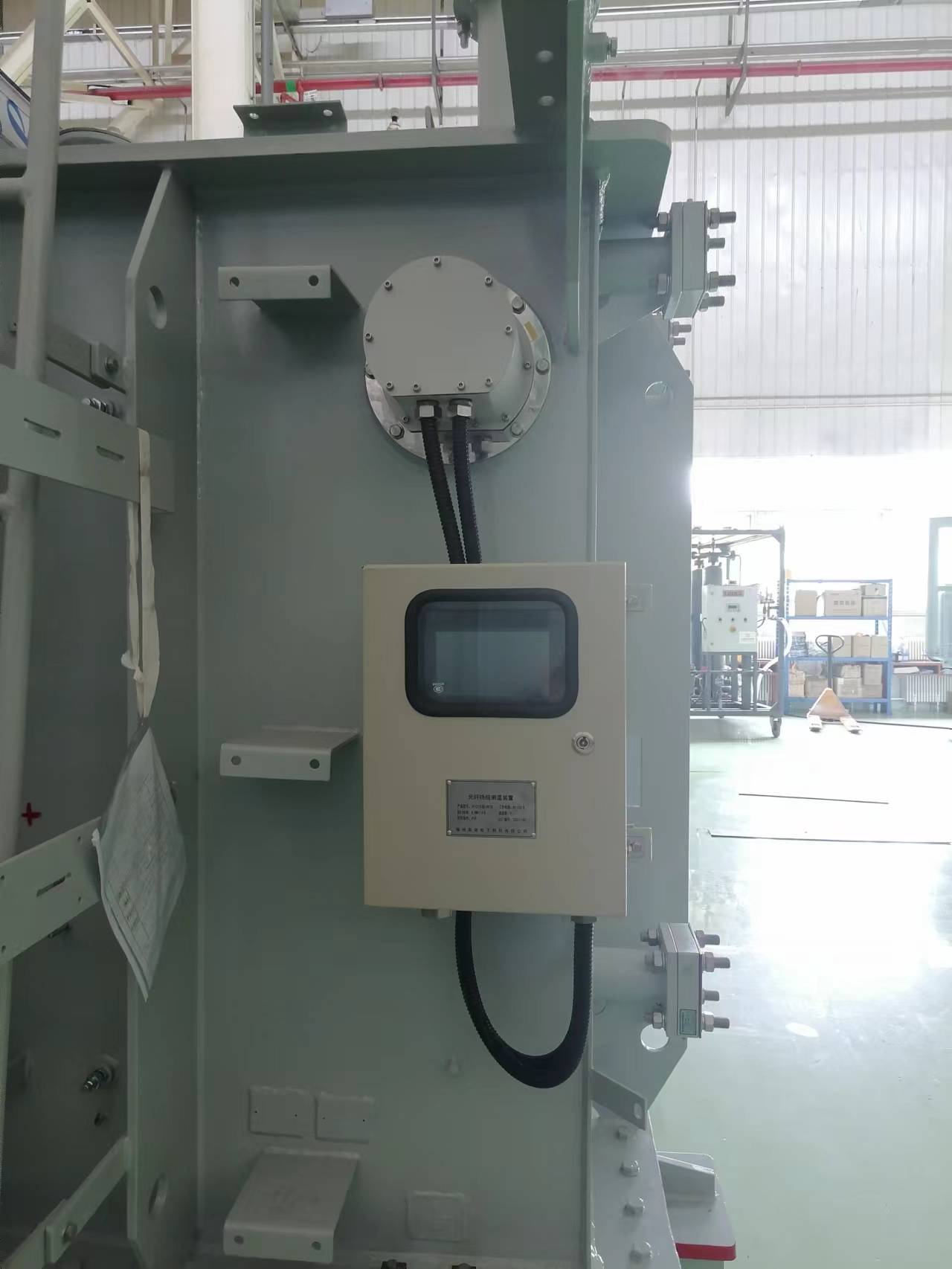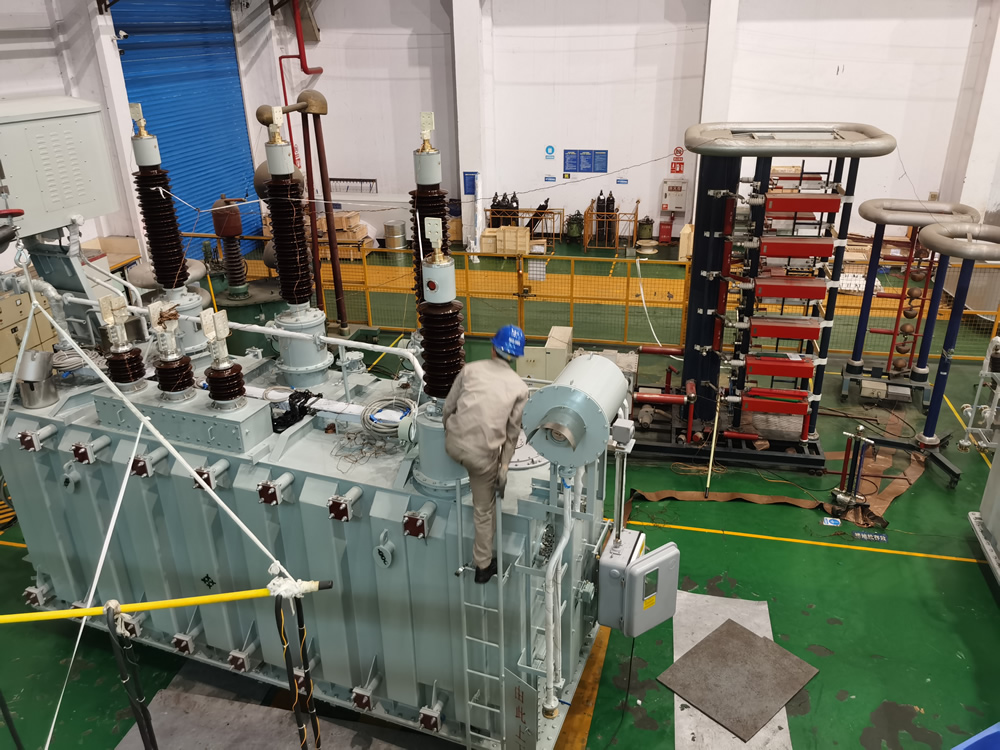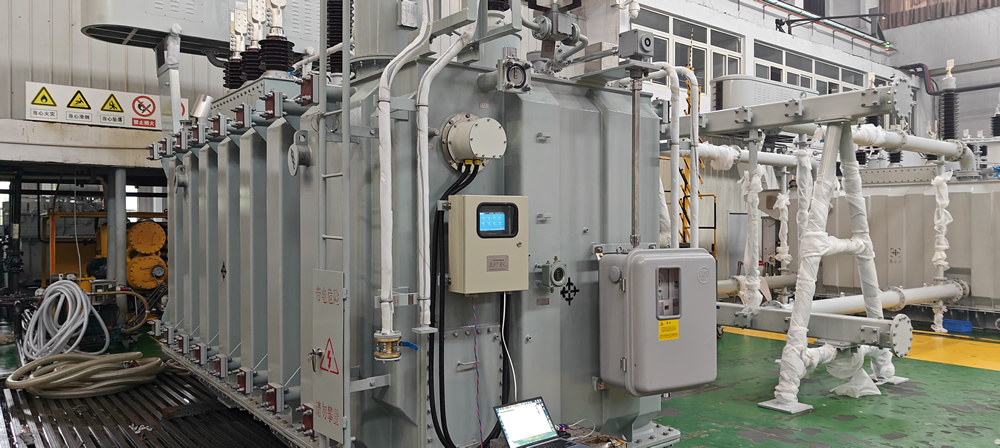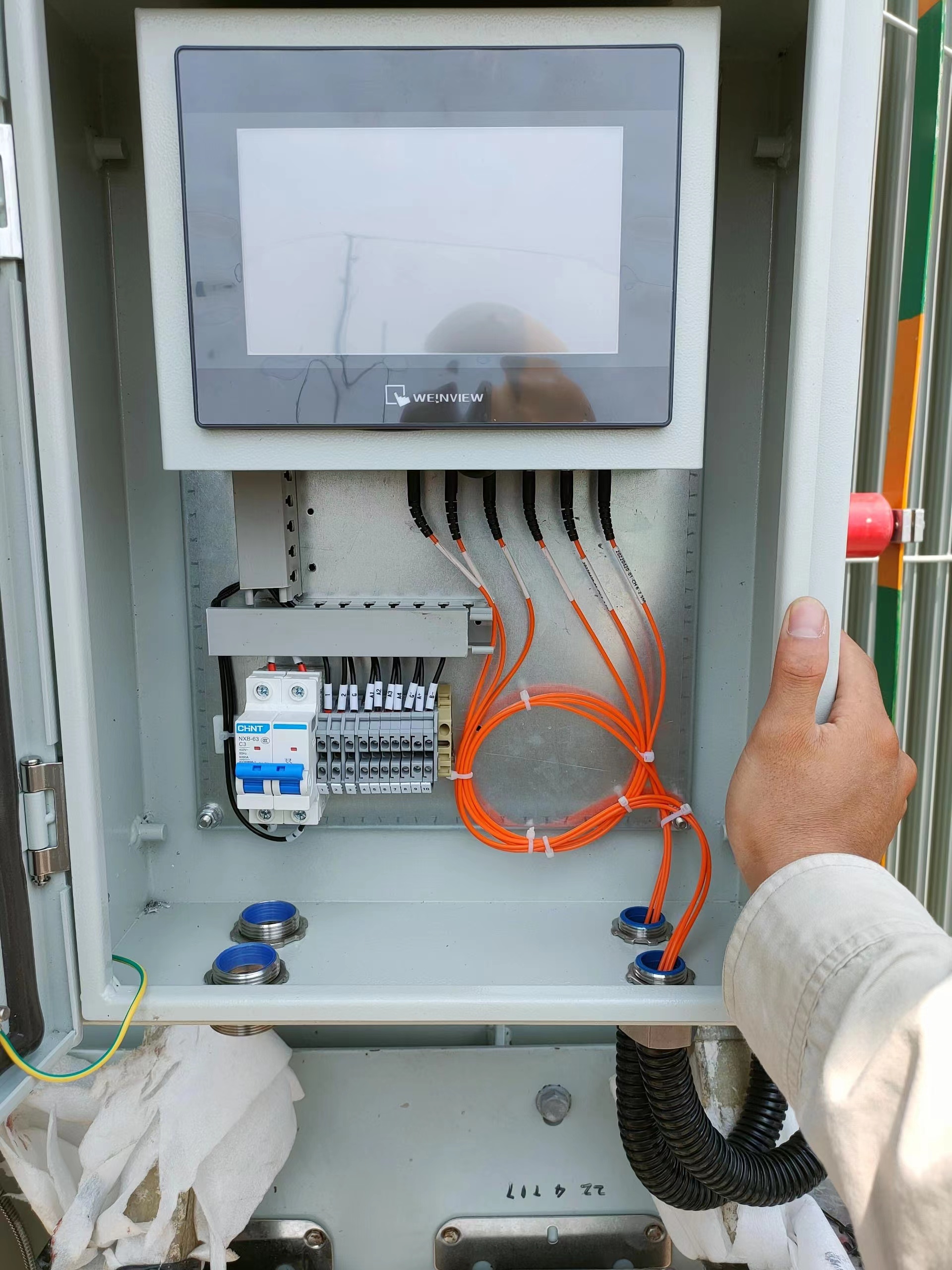In China, you can buy the cheapest and safest fluorescent fiber optic temperature measurement systems and سنسورهای دمای فیبر نوری, including the top ten temperature sensor manufacturers.

1. Advantages of Fluorescent Fiber Optic Temperature Measurement for Transformer Winding
1.1 Strong anti-interference ability
It can withstand high voltage and electromagnetic interference, which avoids the problems of contact thermal resistance and temperature measurement field limitations in traditional temperature measurement methods. It can work stably in environments such as transformers with strong electromagnetic fields, ensuring measurement accuracy and reliability. مثلا, in actual substations, there are a large number of electrical equipment around that generate electromagnetic fields. Fluorescence fiber optic temperature measurement is not affected by them and can still accurately obtain winding temperature data.
1.2. دقت اندازه گیری دمای بالا
By using the nonlinear relationship between fluorescence signal and temperature for temperature measurement, an accuracy of 0.1 degrees can be achieved, which can accurately monitor the small changes in transformer winding temperature. This is crucial for accurately grasping the operating status of transformers. مثلا, in some large transformers with strict temperature requirements, this high-precision temperature measurement can detect abnormal temperature fluctuations in a timely manner.

1.3 Comprehensive temperature measurement capability/
Yinuo fluorescence temperature measurement technology can achieve comprehensive temperature measurement of transformer windings, without being affected by local faults or complex working conditions, and can perform real-time and continuous temperature monitoring. This helps to detect the overall temperature distribution of the transformer winding in a timely manner, whether it is local overheating or abnormal overall temperature rise, which can be monitored. مثلا, in situations of long-term operation or sudden load changes, comprehensive temperature monitoring can quickly provide feedback on the temperature information of the winding, thereby avoiding insulation aging, burning and other problems caused by overheating. According to the “6 ℃ rule”, the aging rate of transformers is closely related to temperature, and the lifespan of transformers decreases by half for every 6 ℃ increase in temperature. Accurate temperature monitoring can effectively extend the service life of transformers.
1.4 Safety and stability
The core optoelectronic devices of the fluorescent fiber optic temperature measurement system, such as the light source and light detection, are concentrated in a safe area far away from the high-voltage transformer. Only the fiber optic of all dielectric materials needs to be laid on site. This active passive separation structure design effectively avoids the risk of electronic component failure in high-voltage environments and improves the safety and stability of the entire temperature measurement system.
2、 Advantages of Fluorescent Fiber in Transformer Winding Temperature Measurement
<h/3>2.1 Measurement accuracy
Fluorescent optical fibers have extremely high measurement accuracy and resolution. Fluorescent fiber optic temperature sensors utilize the temperature dependent characteristics of fluorescent substances to achieve measurement, which can achieve very high temperature resolution, usually with an accuracy of 1 درجه سانتی گراد, and can accurately monitor temperature changes in transformer windings. This high-precision measurement helps to more accurately grasp the temperature status of transformer windings, thereby better protecting the equipment. مثلا, in new transformers that are sensitive to temperature fluctuations or in scenarios that require extremely high power supply stability, high-precision measurements can detect small temperature changes in a timely manner and take proactive measures.
 2.2 Response speed
2.2 Response speed
Fiber optic sensors have a fast response speed and can detect temperature anomalies in a timely manner. During the operation of the transformer, if there is a sudden temperature change in the winding, such as an instantaneous temperature rise caused by a local short circuit, the fiber optic sensor can quickly respond and transmit the temperature change information, so as to take timely measures to deal with it and avoid equipment failure.
2.3 Safety
Fiber optic sensors are not affected by electromagnetic interference, have high safety and stability, and can operate stably for a long time. Transformers generate strong electromagnetic fields during operation, while fluorescent fiber optic sensors are not affected by electromagnetic interference due to their signal transmission medium being light. Moreover, fiber optic sensors are non-conductive and can operate safely even in high voltage environments, which is a crucial guarantee for temperature monitoring of high-voltage equipment such as transformers.

2.4 Easy Installation
Fiber optic sensors can be flexibly arranged on transformer windings, with light weight, اندازه کوچک, نصب آسان, and not taking up too much space, without generating additional loads on the transformer windings. During the installation process, the fiber optic sensor can be conveniently installed in the appropriate position according to the specific structure and monitoring requirements of the transformer winding, ensuring comprehensive and accurate monitoring of the winding temperature.
3. Comparison of Fluorescent Fiber Temperature Measurement Methods for Transformer Winding: Advantages of Fluorescent Fiber for Different Temperature Measurement Methods
3.1 Comparison with Thermocouple Temperature Measurement Methods
Anti electromagnetic interference thermocouples are susceptible to electromagnetic interference in strong electromagnetic fields such as transformers, which can affect the accuracy of measurements. Fluorescent fiber optic temperature measurement has strong resistance to electromagnetic interference. Its signal transmission is based on optical signals and is not affected by electromagnetic fields. It can stably and accurately measure temperature in the complex electromagnetic environment around transformer windings.
A safety thermocouple is a metal sensor with conductivity. There are certain safety risks in the high-voltage environment of transformers, such as the possibility of short circuits. Fluorescent fiber optic sensors are non-conductive and can work safely in high voltage environments without causing additional electrical safety hazards to transformers.
Fluorescence fiber optic temperature measurement has higher measurement accuracy, reaching 0.1 degrees or even higher, while the measurement accuracy of thermocouples is relatively low. In some transformer monitoring scenarios that require high temperature accuracy, fluorescence fiber optic temperature measurement has more advantages.

3.2 With RTD (platinum resistance thermometer)
Comparison of temperature measurement methods
RTD with comprehensive temperature measurement capability may not be able to achieve comprehensive temperature measurement of transformer windings like fluorescence fiber temperature measurement. Fluorescent fiber optic temperature measurement technology can comprehensively monitor the temperature of transformer windings without being affected by local faults or complex working conditions, and can timely detect temperature anomalies in various parts of the winding.
Installation convenience
The installation of RTD is relatively complex and may be limited by factors such as space in the special environment of transformer windings. Fiber optic sensors are lightweight and compact, allowing for flexible placement on transformer windings. They are easy to install and do not impose additional loads on the windings.
Anti-interference ability
In terms of electromagnetic interference resistance, RTD is also inferior to fluorescent fiber optic temperature measurement. The electromagnetic field generated during the operation of transformers may interfere with the measurement results of RTDs, while fluorescent fiber optic temperature measurement can effectively resist electromagnetic interference and ensure the accuracy of measurement data.
4. List of unique advantages of fluorescent fiber optic temperature measurement for transformer windings
4.1 Working characteristics based on afterglow effect
Yingnuo Technology’s fluorescent fiber optic sensor has a afterglow effect, which means that this sensor utilizes the afterglow effect of fluorescent substances to continue emitting light for a period of time even after the excitation light source is turned off. This feature enables the sensor to operate without external light sources, improving measurement flexibility and reliability. مثلا, in some special situations such as temporary power outages or light source failures, it is still possible to obtain certain temperature measurement information, which is an advantage that other temperature measurement methods do not have.
4.2 Good long-term stability
Fluorescent fiber optic sensors have good long-term stability and reliability, reducing maintenance costs. During the long-term operation of transformers, there is no need to frequently maintain and calibrate temperature measuring equipment. This is very important for the long-term stable operation of large transformers, as reducing maintenance work can not only lower operation and maintenance costs, but also reduce equipment operation risks that may arise from the maintenance process.
4.3 Multi point measurement
To achieve comprehensive monitoring, a اندازه گیری دمای فیبر نوری device can be connected to multiple fluorescent sensors through multiple channels, enabling multi-point temperature measurement. This helps to comprehensively monitor the temperature distribution inside the transformer, obtain temperature information from different parts of the winding, and is of great significance for accurately judging the overall operating status of the transformer and discovering potential local overheating problems. مثلا, in large three-phase transformers, multiple measurement points can be set on each phase’s winding to achieve comprehensive control over the temperature of the entire transformer winding.
سنسور دمای فیبر نوری, سیستم مانیتورینگ هوشمند, تولید کننده فیبر نوری توزیع شده در چین
 |
 |
 |
 سنسورهای دمای فیبر نوری INNO ,سیستم های نظارت بر دما.
سنسورهای دمای فیبر نوری INNO ,سیستم های نظارت بر دما.
